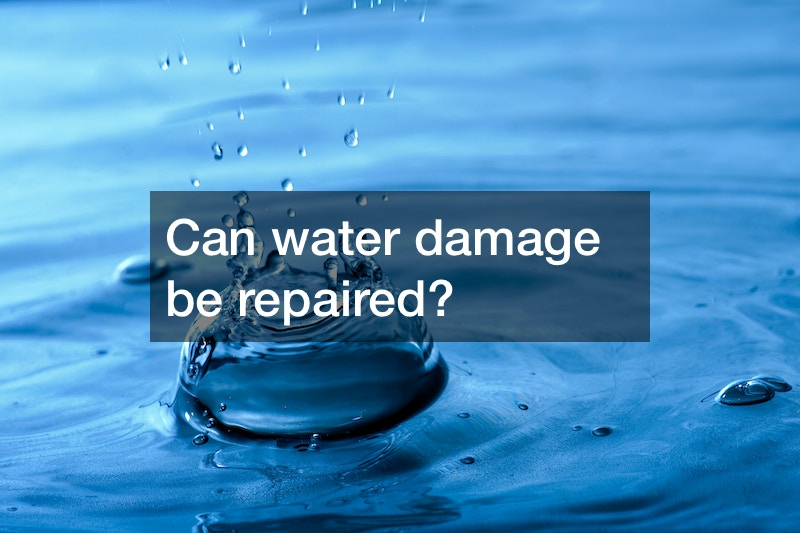

Some individuals with flooded homes might think that their houses are completely beyond saving now. Other people will try to minimize the water damage instead. The technicians from water damage restoration services can give you an objective and relevant analysis of what the water did to your home. You won’t have to rely on your own diagnosis either way. Water damage consulting services are there for people who want to understand the problem.

It’s important to understand the process of mitigation vs restoration. When you mitigate a disaster, you stop it from getting worse. The restoration procedure is about undoing some of the damage caused by the disaster itself. Both mitigation and restoration are important and essential. You won’t usually be able to reverse any of the damage that’s taken place anywhere if the situation is still escalating in some way.
Still, without any restoration measures, you’ll have more long-term water damage issues. Mitigation can be somewhat easier than restoration. Still, your chances of restoring your home might be more reasonable than you think. If the professionals in question are able to get to the right location quickly enough, they’ll already have fewer water damage problems to solve later.

Can water damage be repaired? Water damage is one of the worst problems any home or building owner will ever have to deal with, and residential water damage restoration can cost a ton of money. That’s one of the reasons you should have some kind of insurance, so you can find out how much the average water damage insurance claim costs. Does house insurance cover flooding? That’s a question you should ask before you buy your policy, as you never know when a natural disaster or some plumbing issue could happen. You should always be prepared for the worst.
The average water damage claim can cost thousands of dollars, and you should know what fixing the problem involves. First, the issue must be isolated and stopped, then you’ll have to assess what kind of damage the water caused to your property and have someone from the insurance company, as well as a contractor, come over to see it. They’ll tell you what has to be done, what it’ll cost, and the insurance company will let you know what they cover. You should be ready to pay a significant premium if the water problem was too serious, but there are other things you should know about dealing with this kind of damage. Let’s find out more!

Unfortunately, many homes in the United States suffer water damage every year. Almost all homes with basements will experience some form of water damage at one time or another. This damage can come from many reasons, but the most common are flooding either from natural disaster or broken pipes, or water damage due to a house fire. Flooding is more common than some might think, as all 50 states have experienced flooding in the last five years. Water damage due to a house fire is very common, since firefighters need to use water to douse the flames, this has the side effect of thoroughly soaking any materials or possession not destroyed by fire with hundreds of gallons of water. While fires can also cause smoke damage, water damages can be far more catastrophic. Fire damage repair can be a lengthy process, but it is important to begin as soon as possible. Cleaning up quickly from water damage, no matter where it came from, is essential.
When cleaning up from water damage and starting the process of fire damage repair, it is important to be aware of the risk of mold. Mold can appear in as little as forty-eight hours and the longer wet materials are laying around, the more likely they will be irreparably ruined or cause permanent damage to the surviving infrastructure of the building. If the wooden framework becomes infested with mold, the entire house might have to be bulldozed before reconstruction can begin. To avoid this happening, it is vital to remove wet materials and possessions from the damaged home as quickly as possible. In the case of smaller items, it might be possible to dry them out in a separate location and save them, but larger items like rugs, dressers, couches, and bed frames, should be considered a total loss and removed. The best way to prevent mold further damaging the house is to clean out the entire space. There is still the risk of mold, depending on how much water was sprayed into the building, but it will be a lesser risk if the home is cleared out quickly. If the roof was compromised from fire damage, it is also important to cover the hole with plywood and tarp. That way, if it rains, the temporary cover will keep the excess water out and prevent the damage from getting worse.
In conclusion, the best thing to do after the home suffers water damage is to clean out the wet materials as quickly as possible. This will lessen the risk of a mold infestation that could cause serious damage to the surviving structure. Fire damage repair can be a long process, but following this step can help make it that much easier.